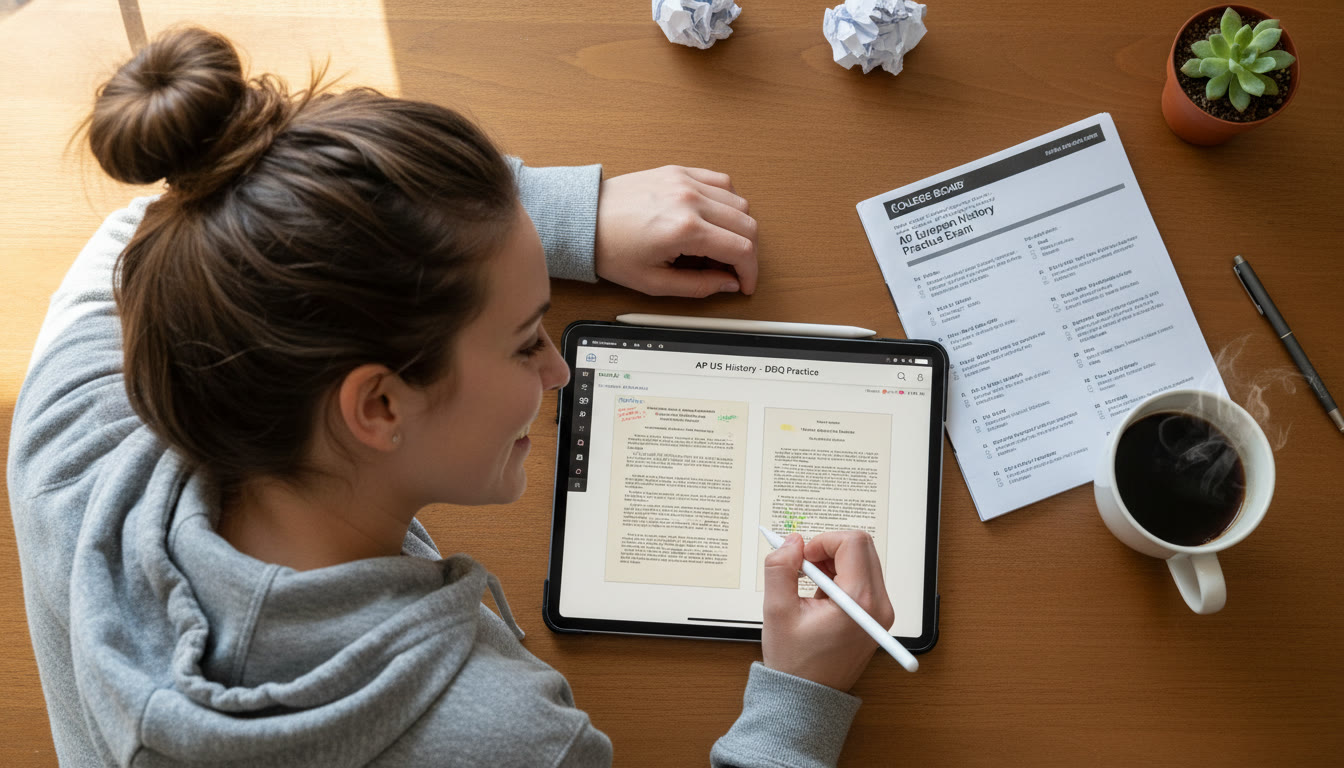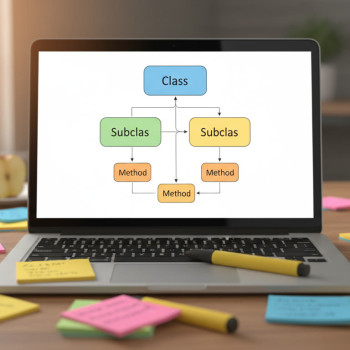Why Tablet Note-Taking Matters for AP Students
If you’re preparing for AP exams, every minute of study counts. Tablets—especially iPads—have become an attractive alternative to notebooks. They’re portable, flexible, and can centralize everything from lecture notes and problem sets to annotated PDFs and flashcards. But like any tool, a tablet can be a superpower or a distraction depending on how you use it. This article gives you a balanced, practical guide: the real pros and cons of tablet note-taking, concrete best practices to get the most from your device, and study routines designed for AP coursework. We’ll also highlight where personalized tutoring—like Sparkl’s 1-on-1 guidance and tailored study plans—naturally fits into an effective tablet-driven study strategy.
Pros: Why Students Love Taking Notes on iPads and Tablets
Tablets offer several clear advantages for AP students. Here’s a breakdown of the most useful benefits:
- Portability and all-in-one organization: A single device can hold textbooks, lecture notes, practice tests, multimedia, and apps — which reduces the “where did I put that page?” problem.
- Searchable, synced notes: Digital notes are often searchable and can sync to the cloud, letting you find a formula, quote, or explanation in seconds across devices.
- Multimedia and interactivity: Add images, voice memos, web clippings, and videos to enrich your study notes—especially helpful for AP subjects that benefit from visuals like Biology, Art History, or Physics.
- Cleaner, neater revision: You can erase, rearrange, and duplicate pages without messy cross-outs. Most note apps let you create templates (Cornell, outline, or two-column) and export to PDFs for printing or sharing.
- Advanced annotation and practice: Use a stylus for handwriting practice, drawing diagrams, or annotating practice exams. Many students find writing formulas or timelines by hand on a tablet preserves muscle memory while offering the benefits of digital storage.
- Integration with study tools: Flashcard generators, spaced-repetition systems, and whiteboard apps can work seamlessly with your notes for a unified AP study workflow.
Example: How a History Student Might Use a Tablet
Imagine annotating a primary-source PDF, clipping relevant passages, adding short handwritten margin notes, and then recording a 60-second voice summary to capture your interpretation. Later, you export key quotes to Anki or a flashcard app for spaced review. That’s an efficient end-to-end study loop that’s hard to replicate with paper alone.

Cons: Real Trade-Offs to Consider
No tool is perfect. Here are common downsides students face when moving from pen-and-paper to a tablet-first workflow.
- Distraction risk: Notifications, games, and messaging apps are a tap away. Without guardrails, tablet sessions can fragment quickly.
- Cost and accessories: Good tablets and a responsive stylus add expense. Consider essentials like a case, screen protector, or a keyboard if you’ll type long essays.
- Battery and reliability: Dead batteries at a critical moment (like before a long study block or exam practice) can interrupt momentum. Paper doesn’t require charging.
- Handwriting feel and speed: Some students initially find handwriting on glass less comfortable or slower than pen on paper. This can affect how quickly you take notes during fast-paced lectures.
- Over-organization: It’s tempting to spend hours perfecting digital note aesthetics instead of actively studying. Clean notes are great, but they’re not a substitute for retrieval practice.
How to Decide: Tablet, Paper, or Hybrid?
Ask yourself: which activities benefit most from digital tools? For many AP students, a hybrid approach works best—handwrite problem sets and diagrams on the tablet (or paper), but use digital tools for organizing, searching, and long-term review. If you choose hybrid, be deliberate: assign specific tasks to each medium so you don’t duplicate effort or lose information.
Best Practices: How to Use a Tablet Effectively for AP Preparation
Below are proven strategies to make a tablet an accelerant for learning, not a detour.
1. Choose a Simple, Consistent App Ecosystem
It’s tempting to juggle many apps. Instead, pick a primary note app (one that supports handwriting, typed notes, PDF annotation, and export) and a secondary flashcard/review app. Keep naming conventions and a folder structure consistent—e.g., AP Bio → Semester 1 → Unit 2. Consistency reduces friction when retrieving information.
2. Use Templates and Note Structures
Templates speed up note-taking and make review easier. Adopt formats like:
- Cornell Notes: Cue column, notes area, and summary area — great for review and self-quizzing.
- Two-Column Problem Solving: Work on the left, theory and final answer on the right — ideal for math and physics.
- Concept Map Pages: For synthesis-heavy AP subjects (e.g., AP Lang synthesis essays or AP Psychology concepts).
3. Prioritize Retrieval Practice and Active Review
Digital notes can lull students into passive rereading. To avoid this, convert notes into active tools:
- Create flashcards directly from annotated notes.
- Use hide-and-reveal techniques with layers (write a question, then hide the answer layer).
- Schedule weekly retrieval sessions—try closing your notes and writing everything you remember for 10 minutes, then use the tablet to check and correct mistakes.
4. Integrate Past AP Exams and Timed Practice
Annotate released AP free-response questions and sample answers. Use your tablet to time practice sections, write responses by hand with a stylus, and then export or print for tutor review. Sparkl’s tutors can review your timed responses and create a tailored revision plan targeting the specific rubric skills you need to improve.
5. Maintain a Minimal Notification Policy
Turn on Do Not Disturb for study blocks and disable non-essential app notifications. Some students set up Focus modes that only allow study-related apps during scheduled sessions. These small steps dramatically reduce temptation.
6. Back Up Regularly and Export Smartly
Set notes to auto-sync with cloud storage and occasionally export critical files as PDFs. This prevents accidental data loss and makes reviewing on other screens easy. Keep a dated archive of key study sets—this is invaluable when you want to track progress over a semester.
Study Routines & Workflows That Work
Here are several concrete routines you can adopt, depending on your schedule and AP load. Each routine assumes you’ll pair tablet note-taking with active review and timed practice.
1. Daily Quick-Loop (30–60 minutes)
- 10 minutes: Quick retrieval—write down everything you remember about the day’s topic without notes.
- 10–20 minutes: Review annotated class notes and add two flashcards to your review app.
- 10–30 minutes: Practice a timed question or problem from a past AP exam.
2. Deep Work Session (90–120 minutes)
- 20 minutes: Focused reading and annotated note capture on the tablet.
- 40 minutes: Active problem solving or practice essays using the stylus.
- 20–30 minutes: Self-explanations, summarize, and export a one-page synthesis for later spaced review.
3. Weekly Synthesis Block (2–3 hours)
- Compile the week’s notes into a one-page concept sheet; use mind maps or tables.
- Convert high-yield ideas into flashcards and schedule them for spaced repetition.
- If possible, get targeted feedback—this is a natural place for Sparkl’s expert tutors to step in with personalized feedback and to adjust your study plan based on performance data.
Practical Table: App Features to Look For
| Feature | Why It Helps | How Students Use It for AP |
|---|---|---|
| Handwriting Recognition | Makes handwritten notes searchable | Find keywords quickly when studying for big-picture review |
| PDF Annotation | Directly mark up passages from primary sources and practice exams | Annotate released AP exam questions and model responses |
| Layering/Hide Text | Supports active recall by hiding answers | Create question-answer layers for self-testing during revision |
| Export to PDF/Image | Share or print work for tutor review | Export timed essays for feedback or share annotated diagrams |
| Cloud Sync & Versioning | Prevents data loss and tracks progress over time | Restore earlier notes to compare problem-solving approach changes |
Common Mistakes and How to Avoid Them
Many students adopt tablets and then unintentionally fall into patterns that reduce learning efficiency. Here are common traps and fixes:
- Trap: Spending hours perfecting notes instead of testing understanding. Fix: Limit formatting time to a fixed window; spend the rest on retrieval practice.
- Trap: Using the tablet for passive highlighting. Fix: Convert highlights into flashcards or short summary sentences immediately.
- Trap: Not sharing or getting feedback. Fix: Schedule regular reviews with a teacher, peer, or an expert tutor; Sparkl’s tutors can give targeted feedback on rubric alignment and study priorities.
- Trap: Over-reliance on search. Fix: Practice writing out answers from memory before looking things up.
How Tutors and Personalized Guidance Amplify Your Tablet Workflow
Using a tablet is powerful, but pairing it with personalized guidance accelerates improvement. Tutors can help you:
- Set high-impact priorities based on released AP rubrics and exam patterns.
- Analyze your timed responses and correct misconceptions—this is more effective than self-marking.
- Refine note-taking methods to match how the AP examiners score responses.
Sparkl’s personalized tutoring offers 1-on-1 guidance and tailored study plans that integrate seamlessly with a tablet-based system. For example, your tutor can recommend exactly which practice questions to annotate, help you structure synthesis pages, and use AI-driven insights to uncover which concepts need more spaced practice. This isn’t about doing your work for you—it’s about focusing effort where it pays off most.

Checklist: Setting Up Your Tablet Study System
Use this short setup checklist to get started quickly.
- Choose a primary note app and enable cloud sync.
- Create a folder structure by subject and unit.
- Install a flashcard app that supports quick card creation from notes.
- Set up a Do Not Disturb or Focus mode for study blocks.
- Buy or test a stylus that feels natural for handwriting.
- Schedule weekly backups and monthly exports of important files.
- Plan regular tutor check-ins for targeted feedback and adjustments.
Final Thoughts: Make the Tool Fit the Goal
Tablets won’t replace hard work, but they can reshape how you organize, practice, and revise. The best approach is intentional: choose a simple app ecosystem, prioritize retrieval-based study, design routines matched to the AP exam format, and add human feedback where it matters. A tablet becomes most powerful when it’s part of a system that includes timed practice, spaced review, and targeted tutoring. If you find yourself stuck refining note aesthetics or overwhelmed by options, a tutor—like those from Sparkl—can help you build a streamlined, exam-focused study plan and keep you accountable.
Short Action Plan to Start Today
- Today: Set up a folder for one AP class and import this week’s lecture PDF.
- This Week: Create a Cornell template and convert three high-yield highlights into flashcards.
- This Month: Complete two timed practice sections on your tablet and export one response for tutor feedback.
With deliberate habits, your tablet can be a calm, efficient command center for AP preparation. Use it to capture ideas quickly, test yourself often, and get the right kind of feedback at the right times. When technology and pedagogy move together, your study time becomes smarter—not just longer. Good luck, and study well.
























No Comments
Leave a comment Cancel